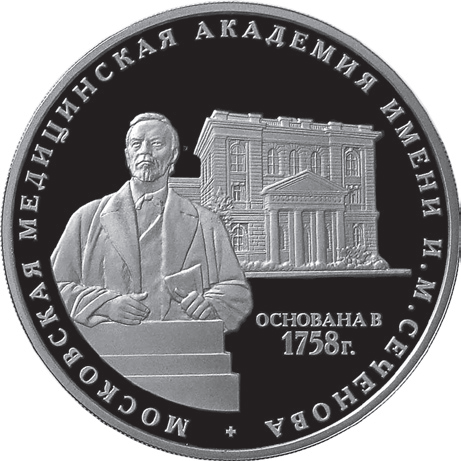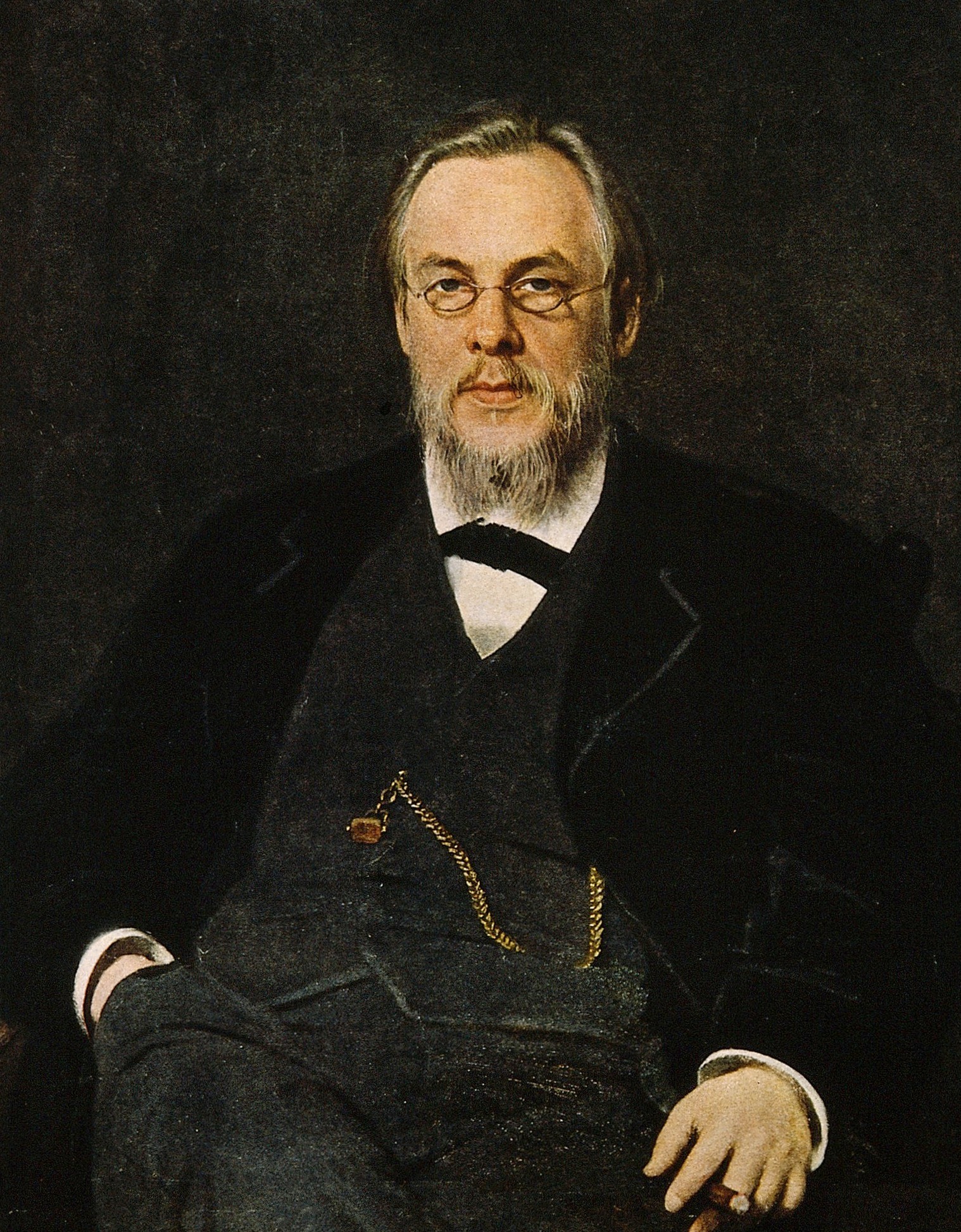|
I.M. Sechenov First Moscow State Medical University
First Moscow State Medical University (MSMU, officially I.M. Sechenov First Moscow State Medical University, informally Moscow Medical Academy or Sechenov University; russian: Первый Московский государственный медицинский университет имени И. М. Сеченова) is the oldest medical university in Russia, located in Moscow. The university was founded in 1758 as medical faculty of Imperial Moscow University as the first medical school in Russia. The institution separated from the Moscow State University and became independent in 1930. The university was renamed after Russian physiologist, Ivan Sechenov, in 1955. It was known as ''I.M. Sechenov First Moscow Institute of Medicine'' until 1990, and ''I.M. Sechenov Moscow Medical Academy'' from 1990 to 2010. MSMU is located at Devichye Pole, a historical medical campus, in Moscow. The university was ranked #651 in the world by QS World University Rankings in 2021, #983 ... [...More Info...] [...Related Items...] OR: [Wikipedia] [Google] [Baidu] |
Public University
A public university or public college is a university or college that is in owned by the state or receives significant public funds through a national or subnational government, as opposed to a private university. Whether a national university is considered public varies from one country (or region) to another, largely depending on the specific education landscape. Africa Egypt In Egypt, Al-Azhar University was founded in 970 AD as a madrasa; it formally became a public university in 1961 and is one of the oldest institutions of higher education in the world. In the 20th century, Egypt opened many other public universities with government-subsidized tuition fees, including Cairo University in 1908, Alexandria University in 1912, Assiut University in 1928, Ain Shams University in 1957, Helwan University in 1959, Beni-Suef University in 1963, Zagazig University in 1974, Benha University in 1976, and Suez Canal University in 1989. Kenya In Kenya, the Ministry o ... [...More Info...] [...Related Items...] OR: [Wikipedia] [Google] [Baidu] |
Nikolay Pirogov
Nikolay Ivanovich Pirogov (Russian: Никола́й Ива́нович Пирого́в; — ) was a Russian scientist, medical doctor, pedagogue, public figure, and corresponding member of the Russian Academy of Sciences (1847), one of the most widely recognized Russian physicians. Considered to be the founder of field surgery, he was the first surgeon to use anaesthesia in a field operation (1847) and one of the first surgeons in Europe to use ether as an anaesthetic. He is credited with invention of various kinds of surgical operations and developing his own technique of using plaster casts to treat fractured bones. Biography Childhood and training Nikolay Pirogov was born in Moscow, the 13th of 14 children of Ivan Ivanovich Pirogov (born around 1772), a major in the commissary service and a treasurer at the Moscow Food Depot whose own father came from peasants and served as a soldier in Peter the Great's army before retiring and opening a brewery in Moscow; Pirogov' ... [...More Info...] [...Related Items...] OR: [Wikipedia] [Google] [Baidu] |
Sergey Botkin
Sergey Petrovich Botkin (russian: Серге́й Петро́вич Бо́ткин; 5 September 1832 – 12 December 1889) was a famous Russian clinician, therapist, and activist, one of the founders of modern Russian medical science and education. He introduced triage, pathological anatomy, and post mortem diagnostics into Russian medical practice. Life and career Botkin was born on 5 September 1832, in Moscow to a family of famous Russian tea tradesmen, and the son of Anna Ivanovna (Postnikova) and Petr Kononovich Botkin. He made his first steps towards education in the private school of Ennes. In 1850 Botkin was admitted to Moscow State University. In 1855 Sergey Botkin graduated from the university with honors and received a Doctor of Medicine degree. Shortly afterwards however he was mobilized as a conscript, designated to serve as military surgeon and sent straight to Sevastopol, where the Crimean War was in full swing. There Botkin worked under the guidance of Nikolay Pir ... [...More Info...] [...Related Items...] OR: [Wikipedia] [Google] [Baidu] |
State Prize Of The Russian Federation
The State Prize of the Russian Federation, officially translated in Russia as Russian Federation National Award, is a state honorary prize established in 1992 following the breakup of the Soviet Union. In 2004 the rules for selection of laureates and the status of the award were significantly changed, making them closer to such awards as the Nobel Prize or the Soviet Lenin Prize.Order of President of Russian Federation N785 on reform of state awards 21 June 2004 Every year seven prizes are awarded: * Three prizes in science and technology (according to newspaper Kommersant there was a fourth 2008 State Prize for Science and Technology awarded by a special [...More Info...] [...Related Items...] OR: [Wikipedia] [Google] [Baidu] |
USSR State Prize
The USSR State Prize (russian: links=no, Государственная премия СССР, Gosudarstvennaya premiya SSSR) was the Soviet Union's state honor. It was established on 9 September 1966. After the dissolution of the Soviet Union, the prize was followed up by the State Prize of the Russian Federation. The State Stalin Prize ( Государственная Сталинская премия, ''Gosudarstvennaya Stalinskaya premiya''), usually called the Stalin Prize, existed from 1941 to 1954, although some sources give a termination date of 1952. It essentially played the same role; therefore upon the establishment of the USSR State Prize, the diplomas and badges of the recipients of Stalin Prize were changed to that of USSR State Prize. In 1944 and 1945, the last two years of the Second World War World War II or the Second World War, often abbreviated as WWII or WW2, was a world war that lasted from 1939 to 1945. It involved the vast majority of th ... [...More Info...] [...Related Items...] OR: [Wikipedia] [Google] [Baidu] |
Lithuanian National Revival
The Lithuanian National Revival, alternatively the Lithuanian National Awakening or Lithuanian nationalism ( lt, Lietuvių tautinis atgimimas), was a period of the history of Lithuania in the 19th century at the time when a major part of Lithuanian-inhabited areas belonged to the Russian Empire (the Russian partition of the Polish–Lithuanian Commonwealth). It was expressed by the rise of self-determination of the Lithuanians that led to the formation of the modern Lithuanian nation and culminated in the re-establishment of an independent Lithuanian state. The most active participants of the national revival included Vincas Kudirka and Jonas Basanavičius. The period largely corresponded to the rise of romantic nationalism and other national revivals of 19th-century Europe. The revival was predated by a short period of the early 19th century known as the "Samogitian revival" led by students of Vilnius University, including Simonas Daukantas and Simonas Stanevičius. The mos ... [...More Info...] [...Related Items...] OR: [Wikipedia] [Google] [Baidu] |
Jonas Basanavičius
Jonas Basanavičius (, pl, Jan Basanowicz; 23 November 1851 – 16 February 1927) was an activist and proponent of the Lithuanian National Revival. He participated in every major event leading to the independent Lithuanian state and is often given the informal honorific title of the " Patriarch of the Nation" ( lt, tautos patriarchas) for his contributions. Born to a family of farmers, Basanavičius was to become a priest but instead chose to study medicine at the Moscow Medical Academy. He worked as a doctor from 1880 to 1905 in the Principality of Bulgaria. Despite the long distance, he dedicated substantial effort to the Lithuanian cultural work. He founded the first Lithuanian-language newspaper '' Aušra'' (1883), contributed articles on Lithuania to the press, collected samples of Lithuanian folklore (songs, fairy-tales, legends, riddles, etc.) and published them. He was also involved with local Bulgarian politics. He returned to Lithuania in 1905 and immediately joined Lith ... [...More Info...] [...Related Items...] OR: [Wikipedia] [Google] [Baidu] |
Ukrainian Academy Of Sciences
The National Academy of Sciences of Ukraine (NASU; uk, Національна академія наук України, ''Natsional’na akademiya nauk Ukrayiny'', abbr: NAN Ukraine) is a self-governing state-funded organization in Ukraine that is the main center of development of science and technology by coordinating a system of research institutes in the country. It is the main research oriented organization along with the five other academies in Ukraine specialized in various scientific disciplines. NAS Ukraine consists of numerous departments, sections, research institutes, scientific centers and various other supporting scientific organizations. The Academy reports on the annual basis to the Cabinet of Ministers of Ukraine. The presidium of the academy is located at vulytsia Volodymyrska, 57, across the street from the Building of Pedagogical Museum, which was used to host the Central Council during the independence period of 1917-18. In 1919–1991 it was a repu ... [...More Info...] [...Related Items...] OR: [Wikipedia] [Google] [Baidu] |
Evgeni Babsky
Evgeni Babsky (russian: Бабский, Евгений Борисович; 1902–1973) was a Soviet physiologist, D.Sc., Member of the Ukrainian Academy of Sciences. Biography Evgeni Babsky was graduated from in 1924. During the period of 1932—1949 he works as professor at Moscow St ...[...More Info...] [...Related Items...] OR: [Wikipedia] [Google] [Baidu] |
Oleg Atkov
Oleg Yur'yevich At'kov (Russian: Оле́г Ю́рьевич Атько́в; born 9 May 1949) is a Russian cardiologist and former Soviet cosmonaut. With a doctorate from the Russian Academy of Medical Science, Atkov was chosen to be the health specialist on board Soyuz T-10 and Soyuz T-11. After Atkov's rather long time in space, he returned to work at the Myasnikov Institute of Clinical Cardiology to continue his research on the adaptation of weightlessness and cardiology. With his published research and time in space, Atkov holds two of the USSR's highest honors; the Order of Lenin and the title of Hero of the Soviet Union. Atkov is a professor of medicine at the Russian National Research Medical University and currently serves as the vice president of Russian Railways. Early life Oleg Yur'yevich Atkov was born May 9, 1949, in Khvorostyanka, the former USSR. In 1973, Atkov graduated from I.M. Sechenov First Moscow State Medical University. After his studies at the University, ... [...More Info...] [...Related Items...] OR: [Wikipedia] [Google] [Baidu] |




.jpg)

